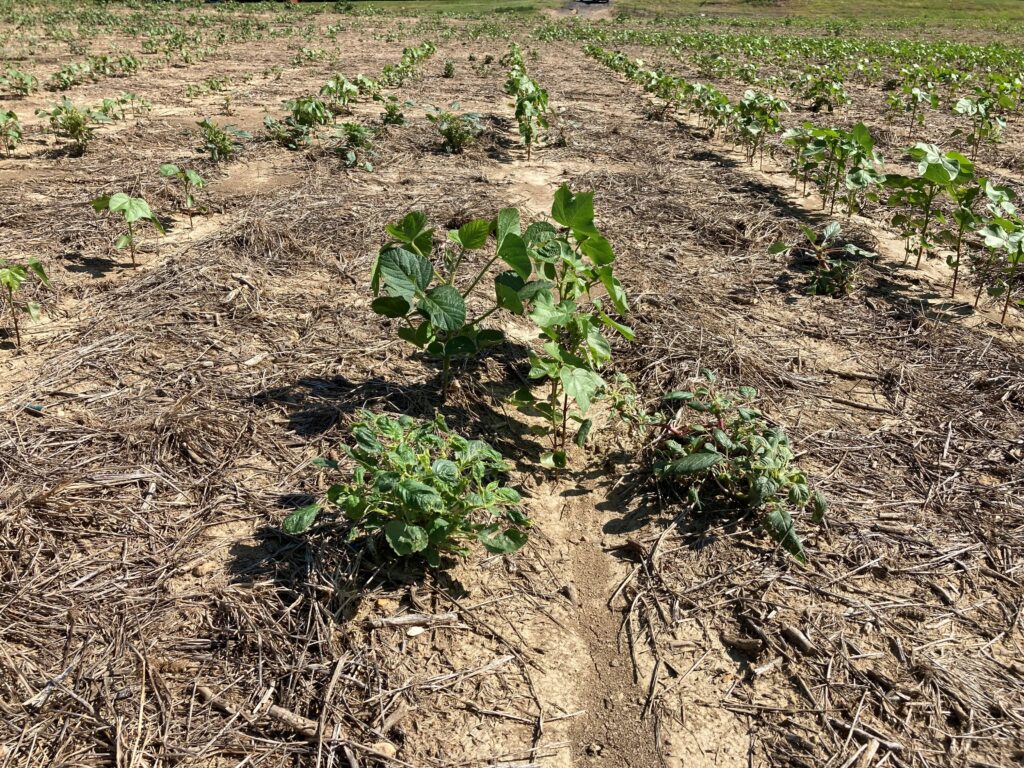
The forecast, unfortunately, would suggest we are in store for another hot and dry week. That persistent weather pattern makes the challenging aspect of weed control more difficult which leads to questions. One common one is how long a residual herbicide will persist on the soil surface before a rain activates it? Another common question during long stress periods is the poor weed control from a POST application due to resistance or dry weather.
There is no one size fits all answer to the question on how long a residual will lay on the soil surface and still provide weed control when a rain arrives. The answer really depends on a number of factors including which herbicide as well as the amount and timing of first precipitation.
In general, herbicides like Dual Magnum or Outlook will last 10 days or so before they degrade to the point they have essentially played out and will provide little residual control. Warrant on the other hand is encapsulated and will last a few days longer. However, that encapsulation is a double-edged sword. On the plus side, it does allow Warrant to lay unactivated longer than Dual or Outlook and still provide control when a belated rain arrives. On the down side though, it requires more precipitation to activate than Dual or Outlook. Pyroxasulfone will most likely persist on the soil for as long as Dual or Outlook. It is the most water soluble of this group of herbicides and needs little precipitation to become activated. As such, products like Zidua or Anthem Maxx often provide more consistent residual control if you can just catch even a small shower.
The other question of is the poor weed control from a POST application due to dry weather or resistance can often be answered by field observation. If all the weed species alive in the field likely have at least some resistance to typical dicamba + glyphosate POST application like goosegrass, Palmer amaranth and volunteer XtendFlex soybeans (Picture 1) then resistance is likely playing at least some role in the poor control. However, if weeds like sicklepod, cocklebur and morningglory are also escaping the application then dry weather conditions may be the primary reason for the poor control.
One additive to POST applications than can help increase weed control during stress periods is ammonium sulfate (AMS). We typically do not recommend AMS as most water sources in Tennessee are not hard enough to get a consistent response. However, when weeds are stressed and not taking up herbicides easily then AMS can increase herbicide uptake. Judging from the weather forecast it would be prudent to add AMS to most POST applications. Remember Engenia, Tavium and XtendiMax can not be tankmixed with AMS. Rather use one of the many approved AMS substitutes to help with herbicide uptake.

